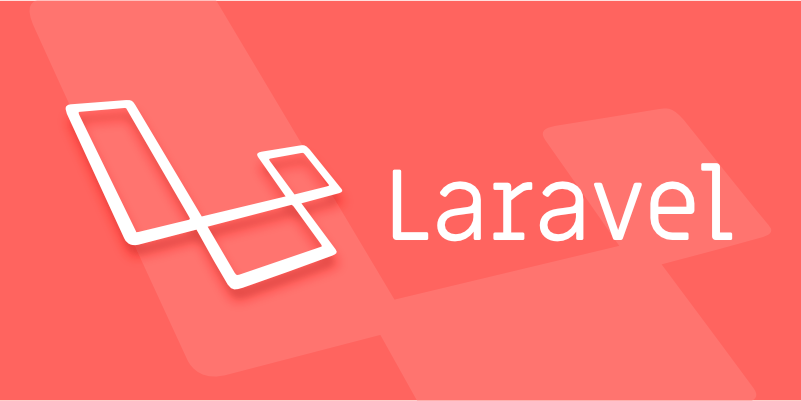The resource controller is a controller in Laravel that handles standard CRUD operations, automatically creating RESTful routes and methods through conventions that are better than configuration. It contains seven methods: index, create, store, show, edit, update and destroy, which correspond to different HTTP requests, such as GET /posts → index, POST /posts → store, etc. Creating a resource controller can be implemented through the Artisan command php artisan make:controller PostController --resource, or you can manually add the corresponding method. Use Route::resource('posts', PostController::class); to register a full resource route, or enable partial routes through only() and except() control. Practical application scenarios include blog system, e-commerce backend management and API development, but they are not suitable for functional scenarios that are much different from standard CRUD.

Laravel's resource controllers are a design pattern that helps developers quickly create RESTful-style controllers through conventions that are better than configuration. You only need to define a controller class and follow the naming specifications provided by Laravel, and the framework will automatically generate routes and methods for handling operations such as additions, deletions, modifications, and searches.

What is a Resource Controller?
Resource controller is a controller in Laravel that is specifically used to handle standard CRUD operations. When you use php artisan make:controller command and add the --resource parameter, Laravel will generate a controller for you with basic methods, such as index , create , store , show , edit , update and destroy .
These methods correspond to common HTTP request types and paths, for example:

-
GET /posts→index -
GET /posts/create→create -
POST /posts→store -
GET /posts/{id}→show -
GET /posts/{id}/edit→edit -
PUT/PATCH /posts/{id}→update -
DELETE /posts/{id}→destroy
The benefits of this are to save time, reduce duplicate code, and make the project structure clearer and more unified.
How to create a Resource Controller?
You can quickly create a resource controller through the Artisan command:

php artisan make:controller PostController --resource
This will generate a PostController.php file in the app/Http/Controllers directory, which contains all standard method templates. Of course, you can also add these methods manually.
If you already have a controller and want it to become a resource controller, just make sure it contains the methods mentioned above.
How to use Resource Controller in routing?
In routes/web.php or api.php , use Route::resource() method to register resource routes:
Route::resource('posts', PostController::class);
This statement automatically registers all standard routes for posts resource and maps them to the corresponding method of PostController .
You can also enable only partial routing as needed, such as:
Route::resource('posts', PostController::class)->only([
'index', 'show', 'create', 'store'
]);Or exclude some unwanted routes:
Route::resource('posts', PostController::class)->except(['destroy']);
Practical application scenarios of Resource Controller
- Blog system : The publishing, editing, deleting and other functions of articles can be implemented well with the resource controller.
- E-commerce backend management : Product management, order viewing, and user management can all be quickly built using resource controllers.
- API development : When developing a RESTful API, the resource controller can quickly build an interface structure with the
api.phprouting file.
Note: Although resource controllers are very convenient, not every scenario is suitable for use. If the functions of a controller are very different from those of standard CRUD, it is not recommended to force the resource controller, otherwise the logic will be complicated.
Overall, Laravel's resource controller is a very practical tool that simplifies the relationship between routing and controller and improves development efficiency. As long as you use it reasonably, your code can be cleaner and more structured.
The above is the detailed content of What are resource controllers in Laravel?. For more information, please follow other related articles on the PHP Chinese website!

Hot AI Tools

Undress AI Tool
Undress images for free

Undresser.AI Undress
AI-powered app for creating realistic nude photos

AI Clothes Remover
Online AI tool for removing clothes from photos.

Clothoff.io
AI clothes remover

Video Face Swap
Swap faces in any video effortlessly with our completely free AI face swap tool!

Hot Article

Hot Tools

Notepad++7.3.1
Easy-to-use and free code editor

SublimeText3 Chinese version
Chinese version, very easy to use

Zend Studio 13.0.1
Powerful PHP integrated development environment

Dreamweaver CS6
Visual web development tools

SublimeText3 Mac version
God-level code editing software (SublimeText3)

Hot Topics
 Creating Custom Validation Rules in a Laravel Project
Jul 04, 2025 am 01:03 AM
Creating Custom Validation Rules in a Laravel Project
Jul 04, 2025 am 01:03 AM
There are three ways to add custom validation rules in Laravel: using closures, Rule classes, and form requests. 1. Use closures to be suitable for lightweight verification, such as preventing the user name "admin"; 2. Create Rule classes (such as ValidUsernameRule) to make complex logic clearer and maintainable; 3. Integrate multiple rules in form requests and centrally manage verification logic. At the same time, you can set prompts through custom messages methods or incoming error message arrays to improve flexibility and maintainability.
 Adding multilingual support to a Laravel application
Jul 03, 2025 am 01:17 AM
Adding multilingual support to a Laravel application
Jul 03, 2025 am 01:17 AM
The core methods for Laravel applications to implement multilingual support include: setting language files, dynamic language switching, translation URL routing, and managing translation keys in Blade templates. First, organize the strings of each language in the corresponding folders (such as en, es, fr) in the /resources/lang directory, and define the translation content by returning the associative array; 2. Translate the key value through the \_\_() helper function call, and use App::setLocale() to combine session or routing parameters to realize language switching; 3. For translation URLs, paths can be defined for different languages ??through prefixed routing groups, or route alias in language files dynamically mapped; 4. Keep the translation keys concise and
 Working with pivot tables in Laravel Many-to-Many relationships
Jul 07, 2025 am 01:06 AM
Working with pivot tables in Laravel Many-to-Many relationships
Jul 07, 2025 am 01:06 AM
ToworkeffectivelywithpivottablesinLaravel,firstaccesspivotdatausingwithPivot()orwithTimestamps(),thenupdateentrieswithupdateExistingPivot(),managerelationshipsviadetach()andsync(),andusecustompivotmodelswhenneeded.1.UsewithPivot()toincludespecificcol
 Sending different types of notifications with Laravel
Jul 06, 2025 am 12:52 AM
Sending different types of notifications with Laravel
Jul 06, 2025 am 12:52 AM
Laravelprovidesacleanandflexiblewaytosendnotificationsviamultiplechannelslikeemail,SMS,in-appalerts,andpushnotifications.Youdefinenotificationchannelsinthevia()methodofanotificationclass,andimplementspecificmethodsliketoMail(),toDatabase(),ortoVonage
 Understanding and creating custom Service Providers in Laravel
Jul 03, 2025 am 01:35 AM
Understanding and creating custom Service Providers in Laravel
Jul 03, 2025 am 01:35 AM
ServiceProvider is the core mechanism used in the Laravel framework for registering services and initializing logic. You can create a custom ServiceProvider through the Artisan command; 1. The register method is used to bind services, register singletons, set aliases, etc., and other services that have not yet been loaded cannot be called; 2. The boot method runs after all services are registered and is used to register event listeners, view synthesizers, middleware and other logic that depends on other services; common uses include binding interfaces and implementations, registering Facades, loading configurations, registering command-line instructions and view components; it is recommended to centralize relevant bindings to a ServiceProvider to manage, and pay attention to registration
 Handling exceptions and logging errors in a Laravel application
Jul 02, 2025 pm 03:24 PM
Handling exceptions and logging errors in a Laravel application
Jul 02, 2025 pm 03:24 PM
The core methods for handling exceptions and recording errors in Laravel applications include: 1. Use the App\Exceptions\Handler class to centrally manage unhandled exceptions, and record or notify exception information through the report() method, such as sending Slack notifications; 2. Use Monolog to configure the log system, set the log level and output method in config/logging.php, and enable error and above level logs in production environment. At the same time, detailed exception information can be manually recorded in report() in combination with the context; 3. Customize the render() method to return a unified JSON format error response, improving the collaboration efficiency of the front and back end of the API. These steps are
 Strategies for optimizing Laravel application performance
Jul 09, 2025 am 03:00 AM
Strategies for optimizing Laravel application performance
Jul 09, 2025 am 03:00 AM
Laravel performance optimization can improve application efficiency through four core directions. 1. Use the cache mechanism to reduce duplicate queries, store infrequently changing data through Cache::remember() and other methods to reduce database access frequency; 2. Optimize database from the model to query statements, avoid N 1 queries, specifying field queries, adding indexes, paging processing and reading and writing separation, and reduce bottlenecks; 3. Use time-consuming operations such as email sending and file exporting to queue asynchronous processing, use Supervisor to manage workers and set up retry mechanisms; 4. Use middleware and service providers reasonably to avoid complex logic and unnecessary initialization code, and delay loading of services to improve startup efficiency.
 Understanding Dependency Injection in Laravel?
Jul 05, 2025 am 02:01 AM
Understanding Dependency Injection in Laravel?
Jul 05, 2025 am 02:01 AM
Dependency injection automatically handles class dependencies through service containers in Laravel without manual new objects. Its core is constructor injection and method injection, such as automatically passing in the Request instance in the controller. Laravel parses dependencies through type prompts and recursively creates the required objects. The binding interface and implementation can be used by the service provider to use the bind method, or singleton to bind a singleton. When using it, you need to ensure type prompts, avoid constructor complications, use context bindings with caution, and understand automatic parsing rules. Mastering these can improve code flexibility and maintenance.






